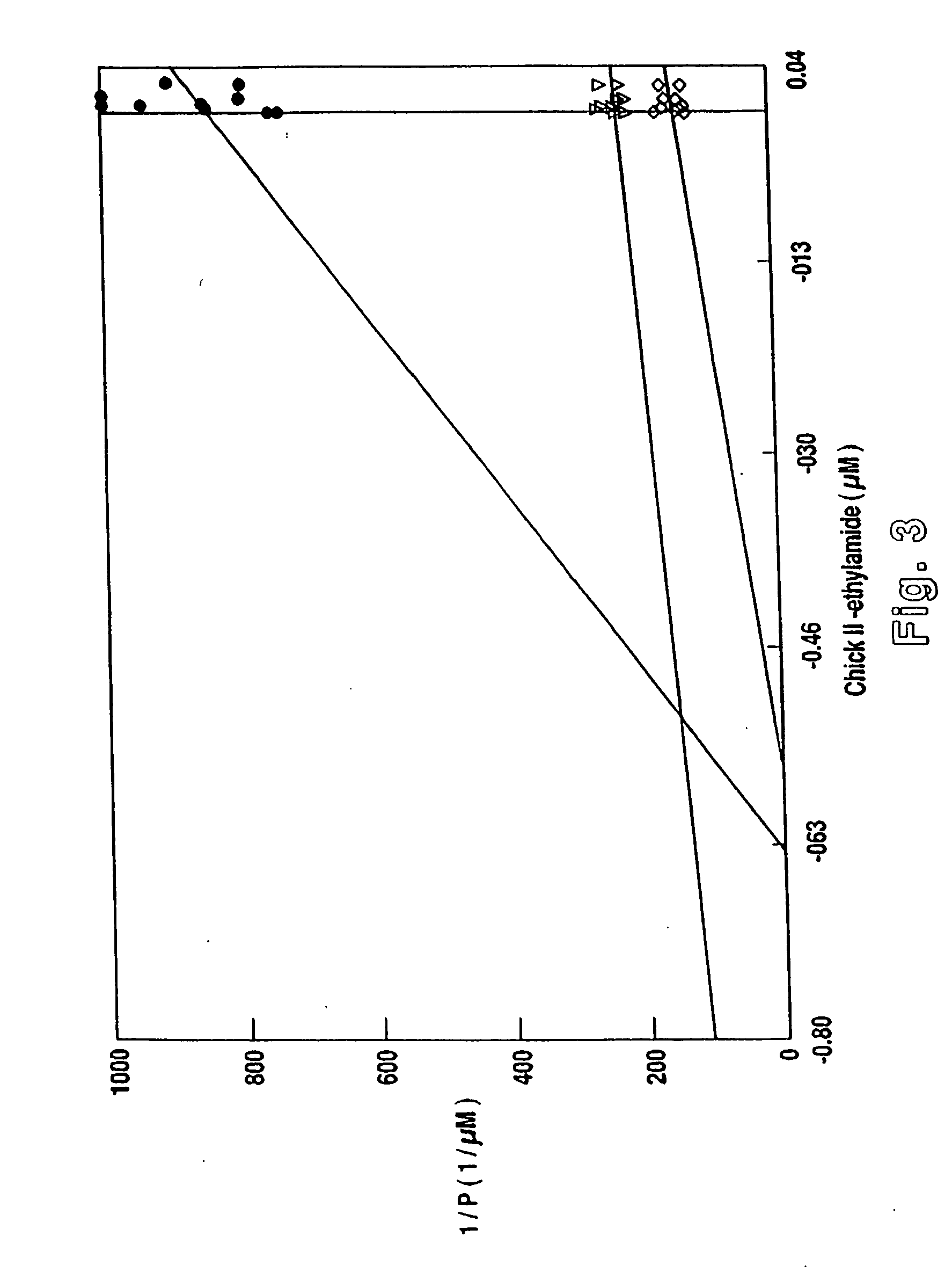Non-mammalian GnRH analogs and uses thereof in regulation of fertility and pregnancy
- Summary
- Abstract
- Description
- Claims
- Application Information
AI Technical Summary
Benefits of technology
Problems solved by technology
Method used
Image
Examples
example i
Design of Non-Mammalian GnRH Analogs
[0153] The present example outlines how analogs of non-mammalian GnRH with increased activity in chorionic, ovarian, tubal and uterine, sperm, testicular, scrotal, seminiferous tubule, Leydig cell, Sertoli cell, epididymis, vas deferentia, prostate, seminal vesicle, ejaculatory duct, and urethral tissues are designed.
[0154] Existing mammalian GnRH analogs are designed for activity at the pituitary GnRH receptor and with extended stability in the circulation of non-pregnant individuals. Yet, the existing data indicate that the ovarian, uterine, and chorionic, sperm, testicular, scrotal, seminiferous tubule, Leydig cell, Sertoli cell, epididyrnis, vas deferentia, prostate, seminal vesicle, ejaculatory duct, and urethral tissues have a high affinity GRFI receptor which differs from that in the pituitary. In addition, the degradation of GnRH is different in the ovary, uterus, and placenta during pregnancy. Therefore, prior known pituitary mammalian ...
example ii
Placental Receptor Binding Activity
[0156] Placental Receptor Studies
[0157] The placental receptor binding activity of the different non-mammalian GnRH analogs of the present invention were compared. There is a human placental GnRH receptor which is distinct from that at the pituitary. Prior mammalian GnRH analogs have been designed to increase activity at the pituitary GnRH receptor and stability in the circulation of non-pregnant individuals. These mammalian GnRH analogs do not demonstrate potent binding activity at the placental receptor as they do at the pituitary receptor. The non-mammalian GnRH analogs of the present invention have been designed to interact with preference at the placental receptor and not the pituitary receptor. They have also been designed to limit degradation by the ovarian, tubal, uterine, and chorionic enzymes, present in maternal circulation as well as the ovary, fallopian tube, uterus, and placenta. Placental binding activity of the newly synthesized n...
example iii
Placental Stability Studies of GnRH Analogs
[0161] The present example demonstrates the utility of using the present invention in controlling and modulating the activity of the placenta, such as in a placenta of a pregnant mammal.
[0162] Mammalian GnRH (SEQ ID NO: 5) and its analogs bind to placental receptors. The present non-mammalian GnRH analogs had not been examined for placental receptor binding. However, the added stability of these non-mammalian GnRH analogs, would effect a substantial increase in bioactivity alone. Thus, both stability and binding studies were performed.
[0163] The enzymatic degradation of the present non-mammalian GnRH analogs were studied using the C-ase-1 enzyme activity assay as well as whole placental homogenate assays. A chorionic peptidase activity that actively degrades GnRH in the placenta, named chorionic peptidase-1 (C-ase-1), was used. This enzyme acts as a post-proline peptidase, and is present in the placenta and in maternal circulation. In a ...
PUM
| Property | Measurement | Unit |
|---|---|---|
| Cell proliferation rate | aaaaa | aaaaa |
Abstract
Description
Claims
Application Information
 Login to View More
Login to View More - R&D
- Intellectual Property
- Life Sciences
- Materials
- Tech Scout
- Unparalleled Data Quality
- Higher Quality Content
- 60% Fewer Hallucinations
Browse by: Latest US Patents, China's latest patents, Technical Efficacy Thesaurus, Application Domain, Technology Topic, Popular Technical Reports.
© 2025 PatSnap. All rights reserved.Legal|Privacy policy|Modern Slavery Act Transparency Statement|Sitemap|About US| Contact US: help@patsnap.com



